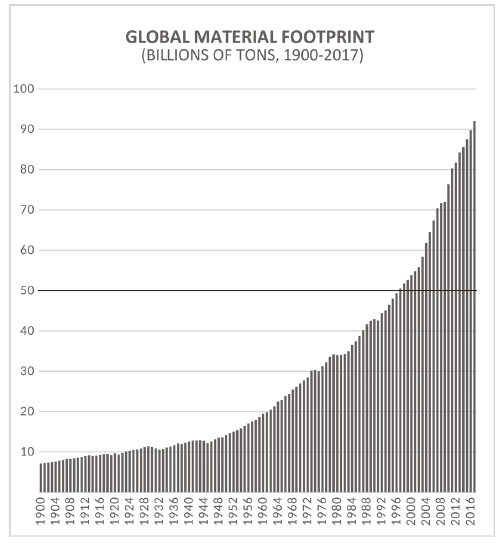
Many scientists believe that the rise of novel viruses like SARS-CoV-2 is being driven by rising resource extraction. If that's the case, we will likely see many more pandemics in the years to come, until we flatten the resource use curve. 

Look at the rate of resource use growth and ask yourself whether vaccinations are going to solve this problem. If we want to avoid living in pandemic misery for the rest of the century, we need degrowth.
We should think of degrowth as a public health intervention.
Sources: the graph is based on UN International Resource Panel data. The horizontal black line is what industrial ecologists consider to be the maximum sustainable level of resource use (50 bn tons per year).
For those asking about the underlying claim: resource use (timber, mining, industrial agricultural, which is captured in the material footprint data) drives deforestation, and deforestation is understood to be a driver of zoonoses. theconversation.com/how-deforestat…
It's worth noting that while most resource frontiers are in the global South, the extraction is driven primarily by consumer demand in the global North (resource use per capita in high-income nations is five to ten times higher than in low and middle-income nations).
"These transmissions between non-human and human animal species are not, necessarily, the result of chance. There is strong evidence that ecological changes have led to increased rates of emerging and re-emerging diseases" ncbi.nlm.nih.gov/pmc/articles/P…
• • •
Missing some Tweet in this thread? You can try to
force a refresh




